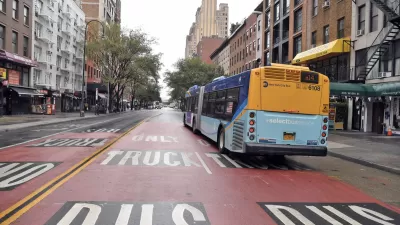One of the more aggressive inclusionary zoning programs in the country has been in place long enough to evaluate for lessons regarding the effectiveness of the controversial affordable housing development tool.

Michael A. Tortorici, co-founder and executive vice president at Ariel Property Advisors, checks in with the Mandatory Inclusionary Housing (MIH) program three years after its inception under the de Blasio administration, with effects beginning to take shape around the city.
"Looking at MIH projects in the pipeline and recent transactions in current or pending MIH areas, it’s becoming increasingly clear where the program is currently delivering, and where it may be falling short," according to Tortorici.
Here are the key findings of the analysis presented in the article:
As of August 15, 2019, city records show approximately 40 new developments underway that will see at least 25 percent of residential floor area allocated to permanent affordable housing. Based on available information, we estimate these projects total approximately 7.3 million square feet of new construction. In terms of gross area being built, approximately 53 percent is under construction in the Bronx, 19 percent is in Brooklyn, 12 percent is in Northern Manhattan, 10 percent is in Queens, and 6 percent is in Manhattan.
While breaking down the development pipeline of the neighborhoods and boroughs around New York in greater detail, Tortorici also presents some conclusions based on the evidence provided by the development market.
FULL STORY: Checking In on NYC’s Mandatory Inclusionary Housing Program

Alabama: Trump Terminates Settlements for Black Communities Harmed By Raw Sewage
Trump deemed the landmark civil rights agreement “illegal DEI and environmental justice policy.”

Planetizen Federal Action Tracker
A weekly monitor of how Trump’s orders and actions are impacting planners and planning in America.

Why Should We Subsidize Public Transportation?
Many public transit agencies face financial stress due to rising costs, declining fare revenue, and declining subsidies. Transit advocates must provide a strong business case for increasing public transit funding.

Understanding Road Diets
An explainer from Momentum highlights the advantages of reducing vehicle lanes in favor of more bike, transit, and pedestrian infrastructure.

New California Law Regulates Warehouse Pollution
A new law tightens building and emissions regulations for large distribution warehouses to mitigate air pollution and traffic in surrounding communities.

Phoenix Announces Opening Date for Light Rail Extension
The South Central extension will connect South Phoenix to downtown and other major hubs starting on June 7.
Urban Design for Planners 1: Software Tools
This six-course series explores essential urban design concepts using open source software and equips planners with the tools they need to participate fully in the urban design process.
Planning for Universal Design
Learn the tools for implementing Universal Design in planning regulations.
Caltrans
Smith Gee Studio
Institute for Housing and Urban Development Studies (IHS)
City of Grandview
Harvard GSD Executive Education
Toledo-Lucas County Plan Commissions
Salt Lake City
NYU Wagner Graduate School of Public Service





























